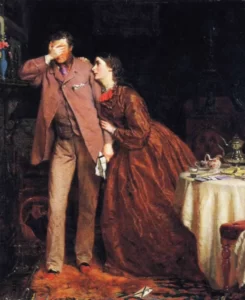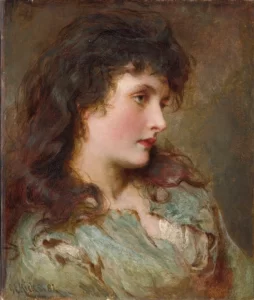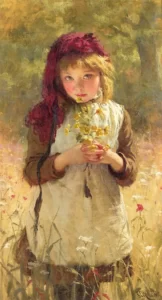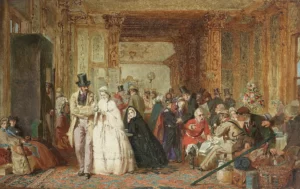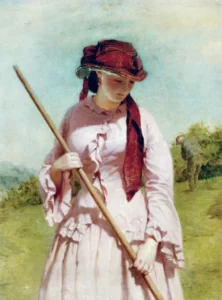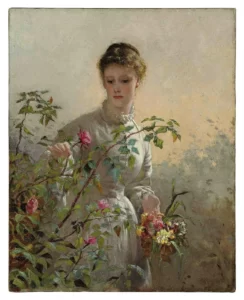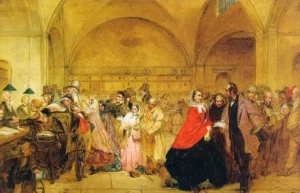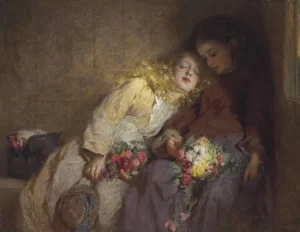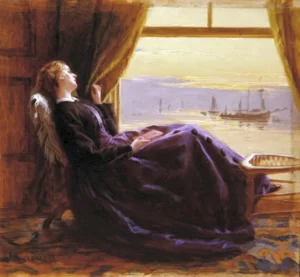George Elgar Hicks (13 March 1824 – 4 July 1914) was an English genre painterPaintings that depict scenes of ordinary people going about their everyday lives. whose work particularly represented Victorian womanhood and femininity. Childhood was a related recurring theme in Hicks’s work, but from the mid-1870s – perhaps for financial reasons – he turned his attention towards portraits of affluent sitters.[1]
Hicks was born in Lymington, Hampshire, on 13 March 1824, the youngest son of Edward Hicks (1783/4–1861). Hicks’s parents wanted him to follow a medical career, like his elder brother John Braxton Hicks (1823–1897), and he thus spent three years of what he later described as “arduous and disagreeable study” pursuing medicine at the University of London. But in 1843 Hicks enrolled at Sass’s AcademyAcademy founded by the English artist Henry Sass (1788–1844), to provide training for those seeking to enter the Royal Academy., and in 1844 gained admission to the Royal Academy Schools.[1]
From 1847 Hicks exhibited in London, at the Royal Academy, the British Institution and the Suffolk Street Gallery.[2] His breakthrough came with his first large genre painting, Dividend Day, Bank of England, exhibited at the Royal Academy in 1859.
Personal life
On 27 March 1847 Hicks married Maria (1825/6–1880), daughter of the tallow miller Joseph Harriss, and settled in Kensington. In their first seven years of marriage they had six (of eight) children. He confided in his notebook that during this period his paintings were “small and unimportant”, owing to much of his time being taken up by attending to “parish work, ragged schoolsSchool that provided free education to destitute children in 19th-century Britain. … and domestic concerns”.[1]
After Maria’s death in 1880 Hicks married Anne (1842–1908), daughter of William Ross, of Pendleton, Manchester four years later. By the turn of the century the couple were living in Odiham, Hampshire, where Hicks died on 4 July 1914.[1]



